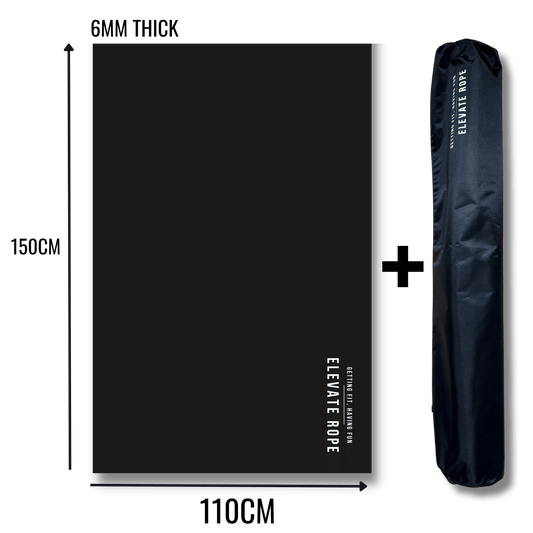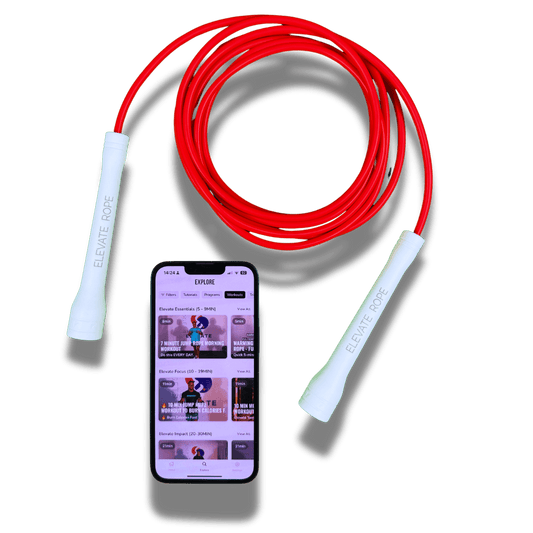5 Steps to Build a Balanced Fitness Routine for Body & Mind
A balanced fitness routine goes beyond exercise—it’s a lifestyle built on consistency, variety, and self-care. True fitness isn’t about endless workouts or strict diets; it’s about creating habits that strengthen both body and mind over time.
When cardio, strength, and recovery work together, your body feels energized and your mind stays clear. Let’s break down the five essential steps to help you build a fitness routine that actually fits your life—and keeps you motivated to move.

1. Start with Cardio for Endurance and Heart Health
Cardio is the heartbeat of any balanced fitness routine. It strengthens your lungs, improves circulation, and boosts your energy levels throughout the day.
You don’t need a treadmill or a gym membership to get started. Even a jump rope, a bike ride, or a brisk walk can transform your endurance. Consistent cardio helps regulate blood pressure, improves stamina, and supports mental clarity by releasing endorphins.
If you’re new to it, start small. Try 20-minute jump rope sessions three times a week. This compact workout burns calories fast while training coordination and agility. Over time, your body adapts, allowing you to go longer and feel stronger.
Cardio also helps with recovery from strength workouts by improving blood flow to your muscles. Combine that with proper hydration and stretching, and you’ll feel lighter and more energized every day.
🧭 External link suggestion: Snow Holistic Health – explore supplements for cardiovascular support and post-workout recovery.
2. Add Strength Training to Build Muscle and Stability
While cardio boosts endurance, strength training builds the foundation for balance and power. Adding resistance work to your balanced fitness routine improves posture, protects your joints, and increases bone density.
Start with bodyweight movements like squats, push-ups, planks, and lunges. Once your form is solid, you can add resistance bands or light weights for progression. Strength training also enhances your metabolism—muscle tissue burns more calories at rest, which means you’ll stay leaner even on rest days.
Focus on compound movements that target multiple muscle groups. They improve overall coordination and stability, preventing injuries during daily activities or cardio sessions.
Remember: form matters more than weight. Train smart, not heavy. Pair each workout with stretching and proper rest to allow muscles to rebuild stronger.
💡 Internal link suggestion: Jump Rope Strength Workouts Guide — how to combine skipping and strength for full-body results.
3. Include Holistic Practices for Recovery and Mindfulness
No balanced fitness routine is complete without mindful recovery. Training hard every day can lead to fatigue, inflammation, or even burnout. Incorporating holistic practices such as yoga, meditation, or breathwork helps balance the body’s intensity with mental calmness.
Yoga, for instance, increases flexibility, improves mobility, and enhances body awareness. Meditation sharpens focus and lowers stress levels. Both improve the mind-body connection, making you more in tune with how your body moves and feels during workouts.
Recovery days aren’t wasted time—they’re where progress happens. Muscles repair, hormones rebalance, and energy stores replenish. By skipping recovery, you risk fatigue and reduced performance.
Try dedicating one or two days a week to mindful movement. Combine gentle yoga flows with deep breathing or short meditation sessions to recharge your energy and mental clarity.
🌿 External link suggestion: Mindful Recovery Tips – Yoga Journal — simple ways to relax and reset between workouts.
4. Plan a Weekly Routine That Fits Your Lifestyle
A balanced fitness routine works best when it’s realistic and adaptable. Instead of forcing yourself into strict gym schedules, design a plan that fits your energy and commitments.
Here’s a simple example of a weekly structure:
- Monday: Jump rope or run (cardio focus)
- Tuesday: Strength circuit (legs and core)
- Wednesday: Yoga or stretching (recovery)
- Thursday: HIIT rope or interval training (cardio + endurance)
- Friday: Upper body strength (arms and shoulders)
- Saturday: Mobility, light stretching, or rest
- Sunday: Active recovery—walks, outdoor movement, or fun play
This rhythm prevents burnout by alternating intensity and allowing muscles to recover. You’ll notice improved energy, motivation, and mood throughout the week.
Keep your sessions dynamic. Add new jump rope routines, adjust resistance, or swap a workout for outdoor activity to stay engaged. Variety keeps progress steady and boredom low.
🎧 Internal link suggestion: Elevate Rope Playlist — get energized with beats designed for cardio flow.
5. Stay Consistent and Celebrate Every Win
The final step in building a balanced fitness routine is consistency. Results come from small, steady actions—not perfection. Even on low-energy days, moving for 10 minutes keeps your momentum alive.
Track your progress weekly. Note how your energy levels, sleep, and confidence improve over time. Celebrate these wins; they reinforce the habit loop that keeps you motivated long-term.
Remember that setbacks are part of the journey. Missing a session or feeling off balance doesn’t mean failure—it’s a chance to reset and return stronger.
Treat recovery, nutrition, and mindfulness as vital pieces of your plan. When your routine aligns with your lifestyle, it becomes effortless to maintain. Over time, you’ll build resilience—not just physically, but mentally too.
True fitness isn’t just about looking good; it’s about feeling capable, present, and alive in your body.
Conclusion: Your Path to Long-Term Balance
A balanced fitness routine doesn’t require perfection—just dedication and awareness. Combine cardio to fuel endurance, strength to build stability, and recovery to keep your mind clear.
When you move with purpose and listen to your body, exercise becomes something you enjoy, not endure. Whether it’s jumping rope in your backyard or flowing through yoga on a Sunday morning, balance is what turns movement into a lifelong habit.
Start small, stay consistent, and keep it fun. Your healthiest, strongest self begins with balance.
- Should You Drink Alcohol While on Semaglutide? What You Need to Know in 2024 and Beyond
- Start Strong with Chronic Myeloid Leukemia: How to Choose your Specialist and Plan for Treatment
- Fruits and Vegetable Servings: Customizable Portion Size Recommendations for Vegetables
- The Role of Diet in Preventing UTIs: What to Eat and Avoid
- Faction Labs Disorder vs Deficit: Everything You Need to Know














